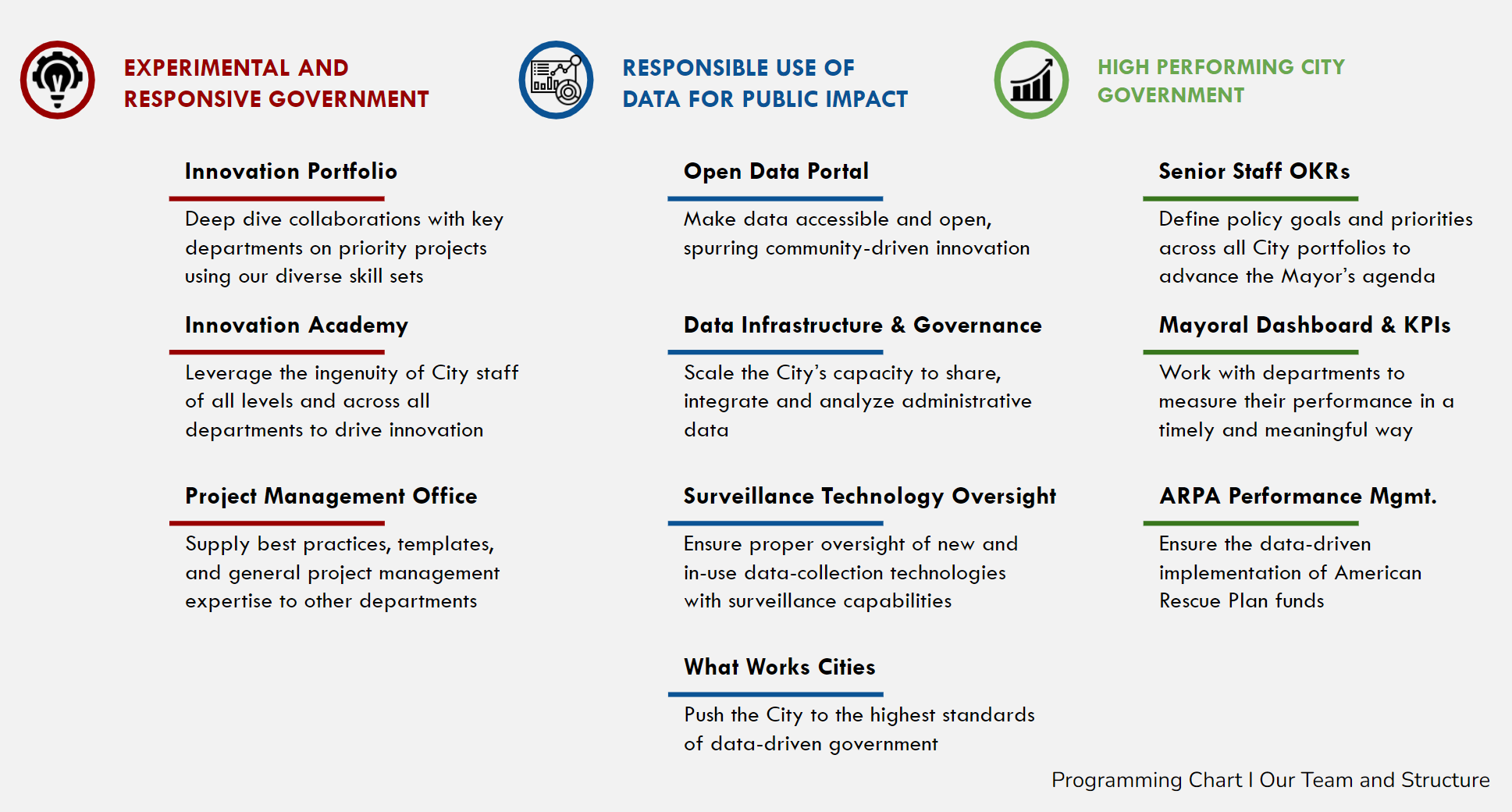The role and mission of our team has been constantly evolving since our inception as a Bloomberg Philanthropies Innovation Team in 2015. As part of a cohort of I-Teams, our team members spent the majority of our efforts focused on solving one high-priority issue per year. Past priority areas have included: Water and Road Infrastructure, Economic Opportunity, Housing Stability, Permitting, and Quality of Life.
In our current iteration as the Office of Accountability, Performance, and Innovation, over time our mission has grown to take on a larger and more diverse set of challenges, including leading cross-department change management and data analysis projects, operating an open data portal, guiding the City’s data infrastructure and governance, and managing the City’s performance management strategy, among other supporting roles and responsibilities.
As this transition gradually occurred over time, we found ourselves spread too thin, with too many projects and not enough team members to adequately support our many initiatives. To help address this, we instituted three changes to how our team operates so that we can better serve our colleagues across City departments and deliver better services to our fellow City residents.
First, starting in September, we took a hacksaw to our list of team commitments. What started as more than 50 total work streams across our portfolio of ongoing programs and projects has today been reduced to a more manageable 35 assignments for our team. This was largely done by wrapping up immediate assignments, transitioning some responsibilities to other City resources, and, at times, getting better at saying “no” to requests that didn’t align well with our skill sets.
Second, we instituted a team practice of conducting monthly hourly projections at the start of every month. This helps to identify potential capacity crunches as various project milestones and deadlines can inevitably conflict. Our team members review these projections every other week during an internal project management meeting to ensure our projects are adequately staffed and workloads are balanced. This structure also serves as an excellent framework to support team members 1 on 1s.
Finally, our team is continuously working to improve how we approach our assignments with more structured project scoping. By being able to clearly define project goals, identify specific tasks, and delineate timelines, we can better commit our resources and achieve our desired results. These efforts are ongoing, and we are very much looking forward to tweaking and improving how we operate as a team in the coming months and years ahead.

